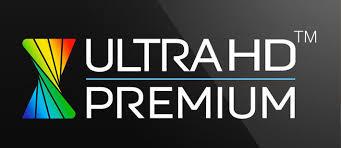What is HDR? An easy guide to High Dynamic Range, and why you NEED it on your next TV
Beyond 4K, HDR is just as important for your next TV – here we explain why and how to track it down

BUYING a TV can be confusing, especially as Black Friday sales are now flooding in.
As if OLED and QLED weren't hard enough to decipher, now you need to know what HDR is too.
It stands for high dynamic range, and (in a nutshell) it can bump up the pixel quality on your 4K TV, resulting in better, more accurate colours and better contrast.
The tech is on most mid- to high-end tellys these days, so you better familiarise yourself with it.
How? By using this detailed break down of all forms of HDR, including HDR+, and Dolby Vision.
What is HDR?
First things first – HDR is not an alternative to 4K Ultra HD (UHD), but rather a complementary TV tech that allows you to watch HDR content on compatible sets.
The amount of HDR entertainment out there is growing all the time, and now encompasses games, downloadable films and 4K UHD Blu-rays, and streaming shows.
You've probably spotted HDR on your smartphone's camera, but it's slightly different on video.
While 4K references the amount of pixels in your telly, HDR is all about the quality of those pixels over quantity.
Not only does it improve the TVs brightness, but it also adds more detail to the picture quality.
As a result, 4K HDR TVs boast darker blacks (or what's known as "true blacks") and brighter whites (and more contrast in-between) as compared to non-HDR 4K TVs.
4K TVs – which ones should I buy?
Here are some of our favourite 4K televisions...
- 40" Samsung 4K TV –
- 49" Samsung 4K TV –
- 65" Toshiba 4K TV –
- 55" Samsung 4K TV –
- 65" LG 4K TV –
What's the difference between HDR10, HDR10+, and Dolby Vision?
Tech companies always take something useful and make it as confusing as possible.
There are currently three competing forms of HDR kicking about, with one dominating the market, and the other two claiming to be the future.
Those old enough will remember the format wars that took place between VHS and Betamax or, more recently, between Blu-Ray and HD-DVD.
In both cases one survived, while the other is long forgotten. And so it will probably go with HDR.
Currently, HDR10 is the most common form of high dynamic range, and can be found on most 4K HDR TVs.
But, Samsung has now introduced HDR10+ and is quickly convincing companies to make the jump to the new format: Panasonic, Phillips, and Amazon have all agreed to use HDR10+ in their various products.
Meanwhile, Dolby makes Dolby Vision, which requires manufacturers to to design TVs with a Dolby Vision chip, from which the company receives licensing fees.
The difference boils down to something called metadata.
Standard HDR10 uses static metadata, which sees the tech pre-set the boundaries of brightness at the start of a film or TV show, after which they don't budge.
HDR10+ and Dolby Vision, on the other hand, boast dynamic metadata that is tweaked on a frame-by-frame basis.
The end result is the most accurate picture for each scene.
So what's the difference between the two?
Samsung's open format allows TV makers to fine-tune the tech to fit their needs.
This should bode well for mid-range TV manufacturers, allowing them to adapt the image to models with a more limited brightness spectrum.
But, Dolby's tech one-ups Samsung by cranking the colour depth to 12-bits, as compared to 10-bits on HDR10+.
How do i find a HDR TV?
The most straightforward way of tracking down a HDR telly is by looking for the Ultra HD Premium logo.
This is basically a seal of approval by the UHD Alliance, a group composed of technology giants and content producers.
The aim of the logo is to cut out the noise and confusion that comes with buying a new TV.
It essentially indicates that the telly carrying it meets the minimum specifications required to be considered truly HDR compatible.
Not all TVs carry the UHD Premium certifcation, which means they will offer some of the benefits of HDR content, but not the optimum experience.
To sum it up, keep your eyes peeled for the shiny logo (pictured above).
Most read in tech
Where can I watch HDR content?
Don't go thinking that just because you have a brand-spanking new 4K HDR TV everything will now magically appear in HDR.
That's simply not the case.
To take advantage of HDR you can either buy a UHD Blu-Ray player (or an Xbox One) with the discs of films and TV shows to go with it or stream HDR content on Netflix and Amazon.
Both streaming services are steadily increasing their HDR libraries, making them a solid bet for super-sharp entertainment.
We pay for your stories! Do you have a story for The Sun Online news team? Email us at tips@the-sun.co.uk or call 0207 782 4368 . We pay for videos too. Click here to upload yours.















